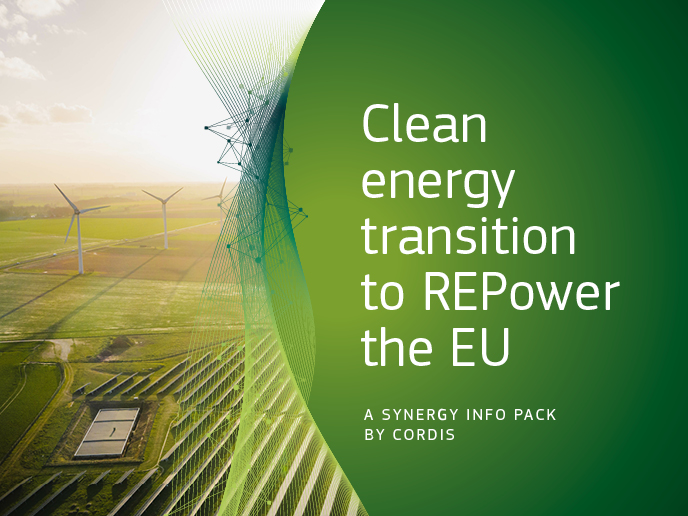Discover the EU-funded projects powering Europe’s clean energy transition
The production and use of fossil fuel-based energy currently accounts for over 75 % of the EU’s total greenhouse gas emissions. If Europe is to achieve its goal of becoming the world’s first climate-neutral continent by 2050, it must start by reducing its dependency on fossil fuels. Unfortunately, Europe can’t quit fossil fuels cold turkey. Crucially, it needs to increase its use of renewable resources, which itself will require new technologies and innovative infrastructure. The transition to clean energy also requires an increase in energy efficiency home renovations, the decarbonisation of industry and the adoption of climate-conscious lifestyles by citizens – not to mention public-private cooperation, community engagement, sustainable transportation alternatives and integrated smart grids. That’s quite the laundry list of requirements, but one that the 33 EU-funded projects highlighted in the new Synergy Info Pack, Clean Energy Transition to REPower the EU, are tackling head-on.
A shared commitment
Though the projects come from different funding programmes, countries and sectors, they all share a commitment to advancing Europe’s clean energy transition. The ‘Accelerating industry’s decarbonisation’ chapter showcases how projects such as STEELANOL and PULSE are turning industrial waste into new resources. Meanwhile, the ‘Renovating Europe’s building stock’ chapter highlights how such projects as LIFE Giga Regio Factory are developing the innovative solutions homeowners need to implement low-cost energy-efficient home renovations that could take a big bite out of the building sector’s substantial carbon footprint. It’s not only industry and homeowners that need to act – the change to clean energy will only work with the active participation of everyone. The good news is that, as the projects in the ‘Shifting consumer behaviour’ chapter show, making this change doesn’t need to be complex or costly. In fact, for the CAMPAIGNers project, it could be as simple as eating less meat or cycling to work.
The technology driving the clean energy transition
The new Synergy Info Pack also covers the many technologies driving the clean energy transition. This includes the sustainable biofuels being developed by BioSFerA and the innovative photovoltaic solutions coming from the BIPVBOOST and LIFE BIPV projects – all three of which are highlighted in the chapter ‘Developing next-generation green energy’. While renewables are at the heart of Europe’s energy transition, getting this energy from source to switch requires new infrastructure. The chapter ‘Expanding smart electricity grids’ examines how the ACON, Danube InGrid and EVVE projects are working to put advanced functionality into the power networks of the future. New technologies are also behind the EU’s rapid uptake of electric vehicles. However, as the ‘Greening the transport sector’ chapter makes clear, reducing transportation-related emissions requires more than just electric vehicles. That’s why the likes of the TrAM, FASTWATER, INES and PowerFLEX projects are all focused on making maritime transport more sustainable. Together, these projects are working to scale up domestic clean energy production and use and end Europe’s reliance on fossil fuel imports, accelerating progress towards a climate-neutral Europe by 2050.
About Synergy Info Packs
Published by CORDIS, Synergy Info Packs highlight the synergies between projects funded under various EU funding programmes, including Horizon Europe, Horizon 2020, LIFE, CEF Energy, CEF Transport, EMFAF and the Innovation Fund, among others. All the projects featured in this Synergy Info Pack are managed by CINEA, the European Climate, Infrastructure and Environment Executive Agency. Established by the European Commission under the motto ‘Funding a Green Future for Europe’, CINEA contributes to the European Green Deal by implementing parts of EU funding programmes for transport, energy, climate action, environment, and maritime fisheries and aquaculture. For more information, please see: https://doi.org/10.2830/890495
Keywords
Synergy, climate neutrality, energy, transition, fossil fuels, renewables, renovation, consumer, smart grids, decarbonisation, CINEA, building stock, consumer behaviour, green energy, smart electricity grids, transport, maritime, shipping, electric vehicles, energy citizens, decarbonisation, solar power, wind energy, industry, European Green Deal, energy transition, sustainable transportation, hydrogen

